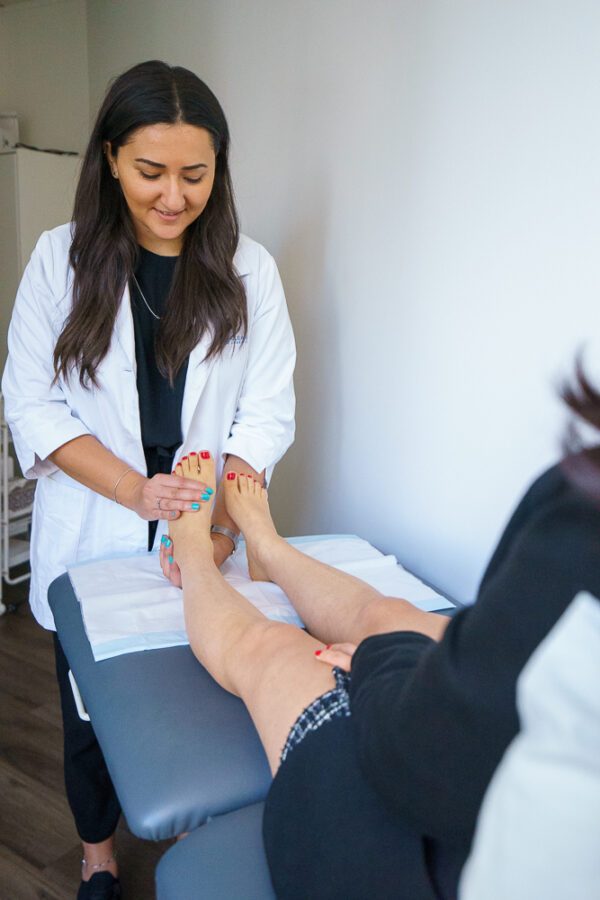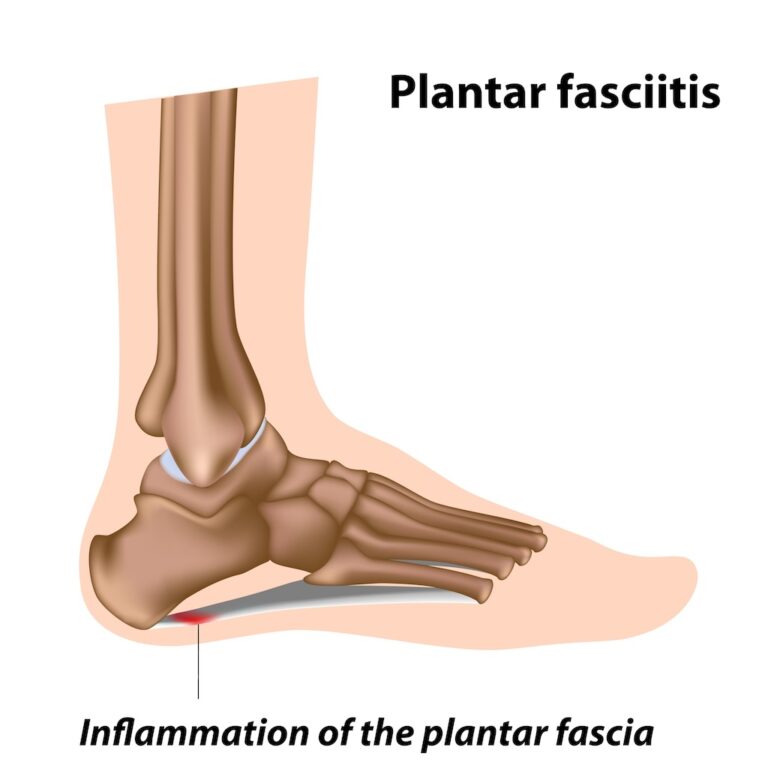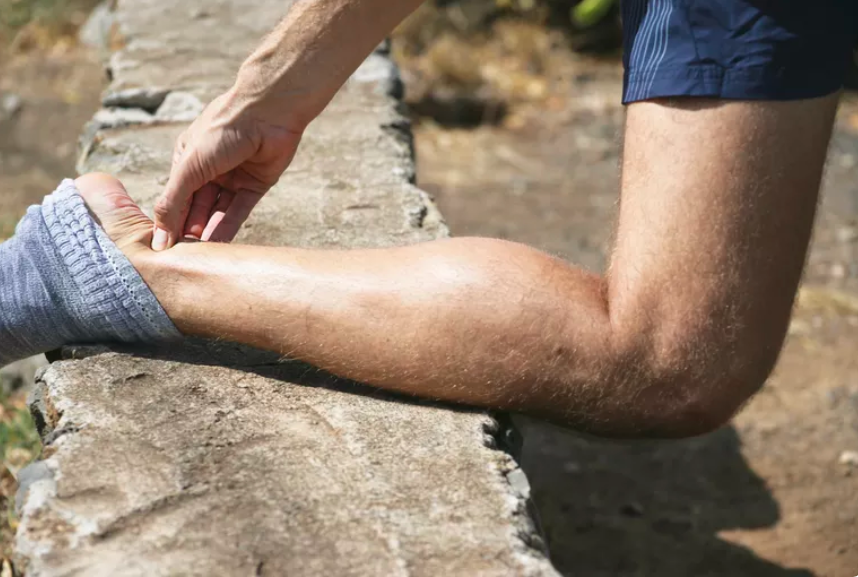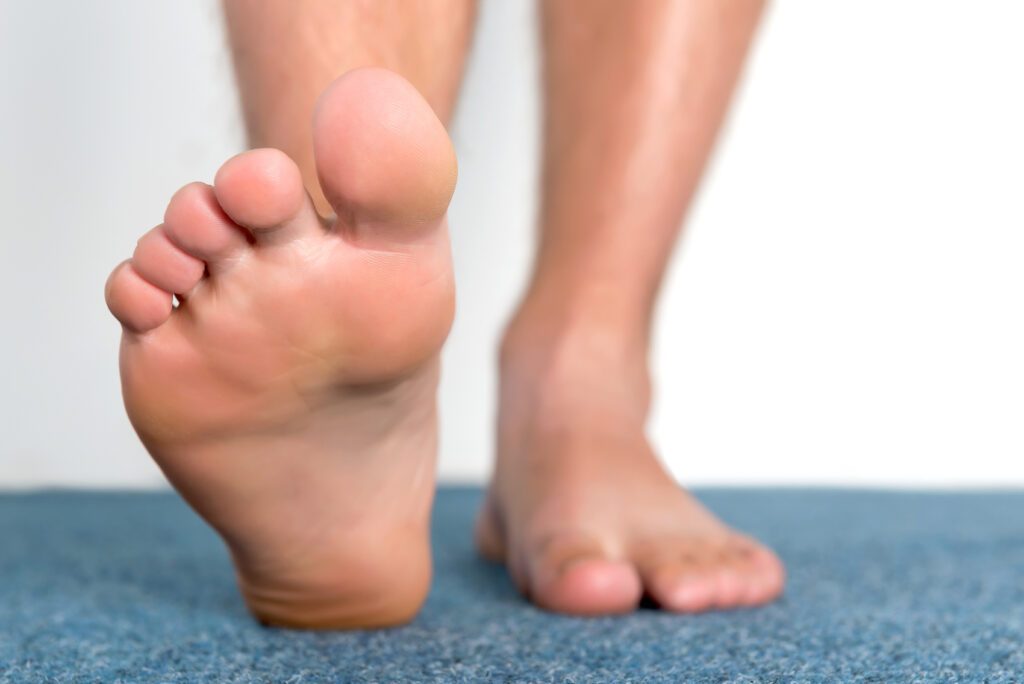Relief from Plantar Fasciitis Pain in Auckland
Treatment for fasciitis plantar
Plantar Fasciitis is the most common cause of heel pain and describes the irritation or degeneration of a thick ligament that attaches from the bottom of your heel and spans out like a fan to your toes, called plantar fascia.
During your examination, your podiatrist will look for: limited upward mobility of the ankle, an area in the front of your heel bone where the greatest tenderness occurs (on the bottom of the foot), a high arch or pain that worsens when you flex your foot.
What symptoms should I look out for?
Plantar Fasciitis will most likely present pain at the bottom of the heel and can advance into the arch. You might also experience the following:
- Swelling.
- Pain on standing first thing in the morning
- Pain on standing after rest.
- Pain can come and go, or it can be constant. Often pain can ease a few minutes after you start walking around.
- Pain can range from a mild discomfort to an intense stabbing.


What causes Plantar Fasciitis?
- A sudden increase in physical activity or the intensity of the activity.
- Activities that strain the arch, such as climbing stairs.
- Wearing shoes that don’t support the arch and fascia.
- Your foot type or foot biomechanics. Those with flat feet tend to put a greater load or force through the fascia.
- Trauma to the intersection of the fascia at the heel, such as jumping down from a high surface.
- Incorrect training technique.
- Increased weight.
How is it treated?
Depending on the severity of your symptoms, treatment may include:
- Orthotics – to support the arch and reduce strain and tension on the plantar fascia. This will allow it to heal, as opposed to being constantly stretched from walking. Custom orthotics can also correct any faulty foot biomechanics that contributed to this condition developing in the first place.
- Stretching – once the initial pain and inflammation settles, and you are able to handle gentle stretching, your podiatrist can demonstrate several stretching exercises that will help to reduce and prevent the onset of painful symptoms. Often other tight muscles in the lower limbs can pull on the heel, and therefore cause strain to the plantar fascia. Stretching will also focus on other tight muscle groups too.
- Footwear – your regular footwear will be checked and discussed to make sure it’s helping, and not hindering, your recovery.
- Strengthening – working to strengthen the muscles of the feet and legs can improve your overall foot and leg function, reducing the risk of injury. Strengthening exercises will be prescribed on a case-by-case basis after reviewing the results of your assessment.
- Strapping – strapping can reduce painful symptoms by keeping your foot in a position that relieves strain and pressure from the plantar fascia.
- PRICE – protection, rest, ice, compression and elevation may be initially used to reduce pain and swelling.
Related Posts

The causes of Heel Pain
There are multiple activities that older and younger people practice that may cause heel pain. There are two main sources of heel pain either from…

Achilles Tendinopathy
Achilles Tendinopathy describes damage to the Achilles tendon, the thick band that connects the muscles at the back of your leg to the back of…

Heel Spurs
Heel spurs are one of the most common foot problems. Most of the time heel spurs do not cause pain, so most people are unaware…
